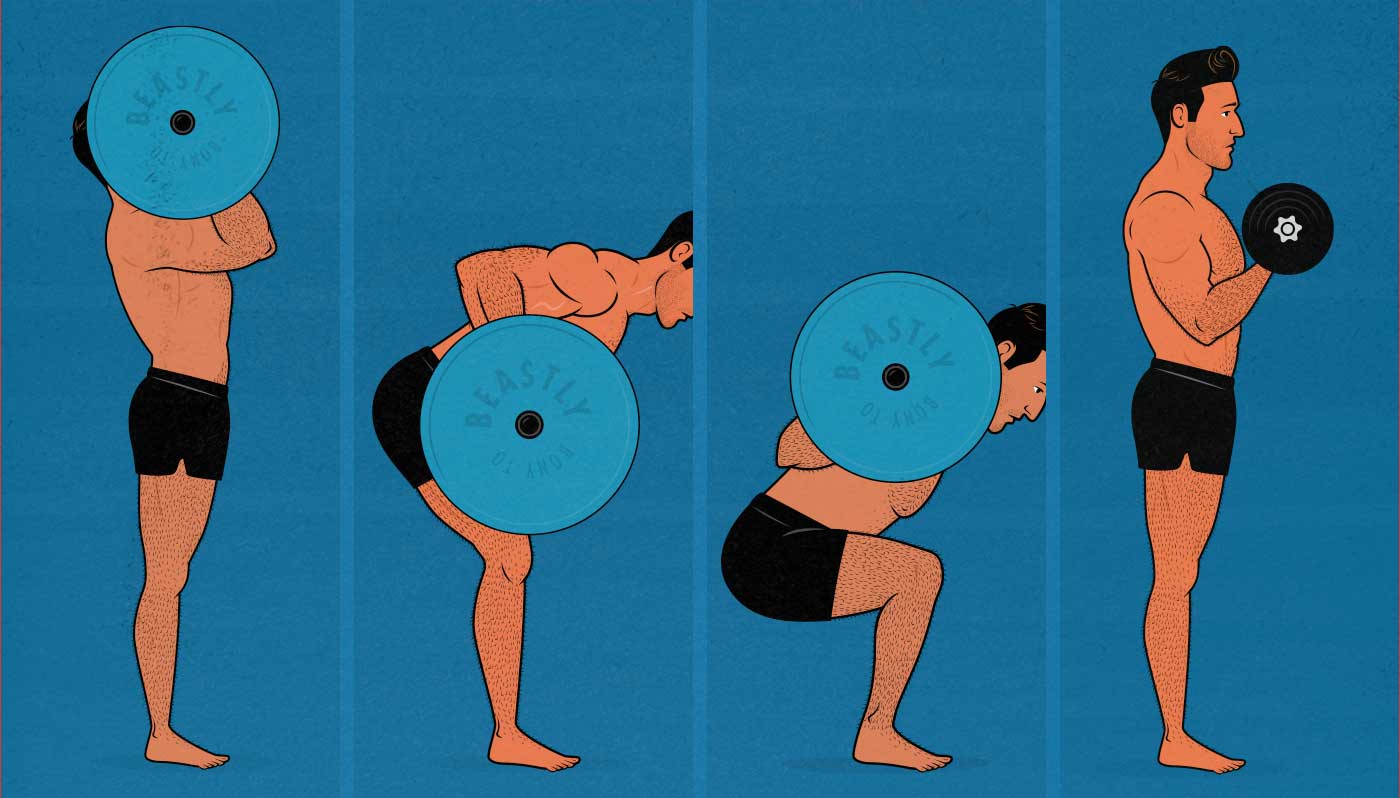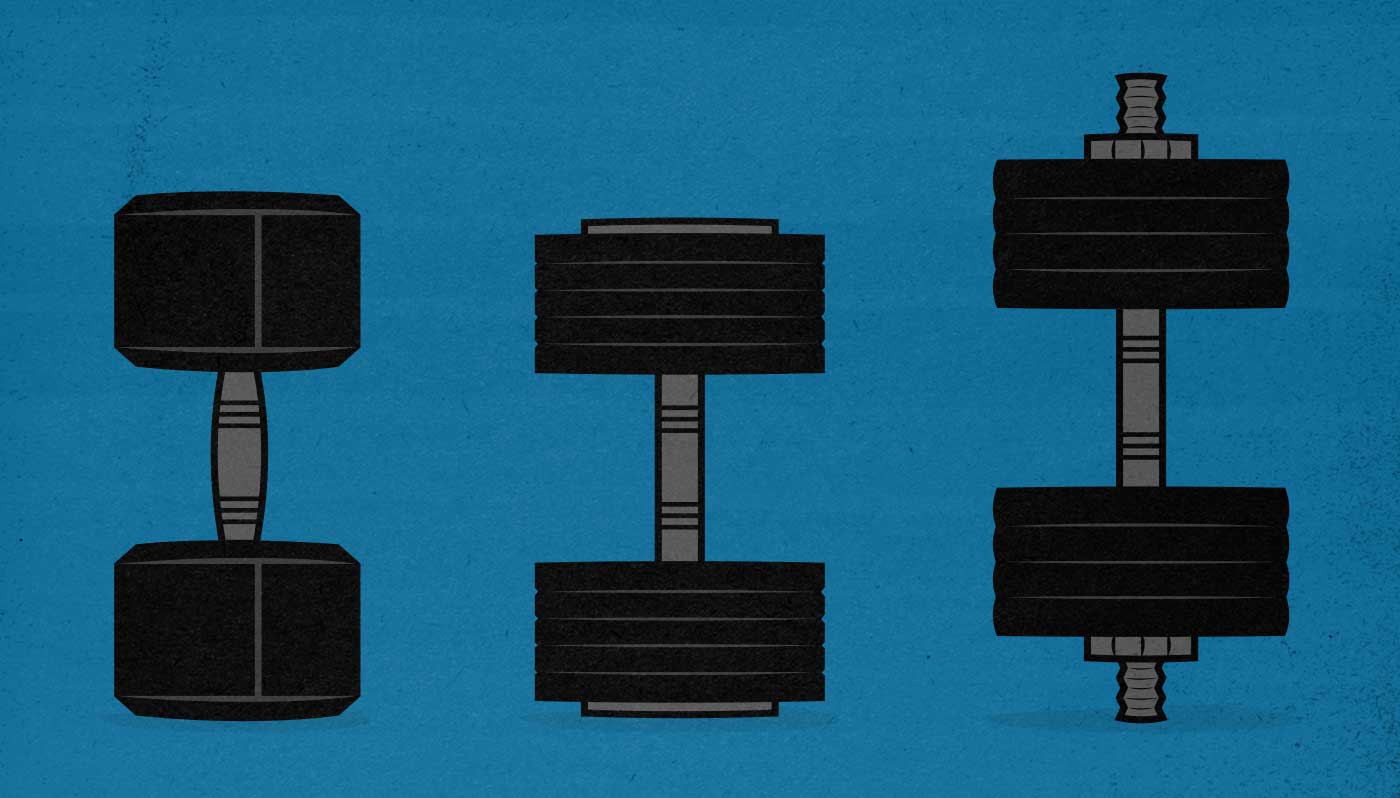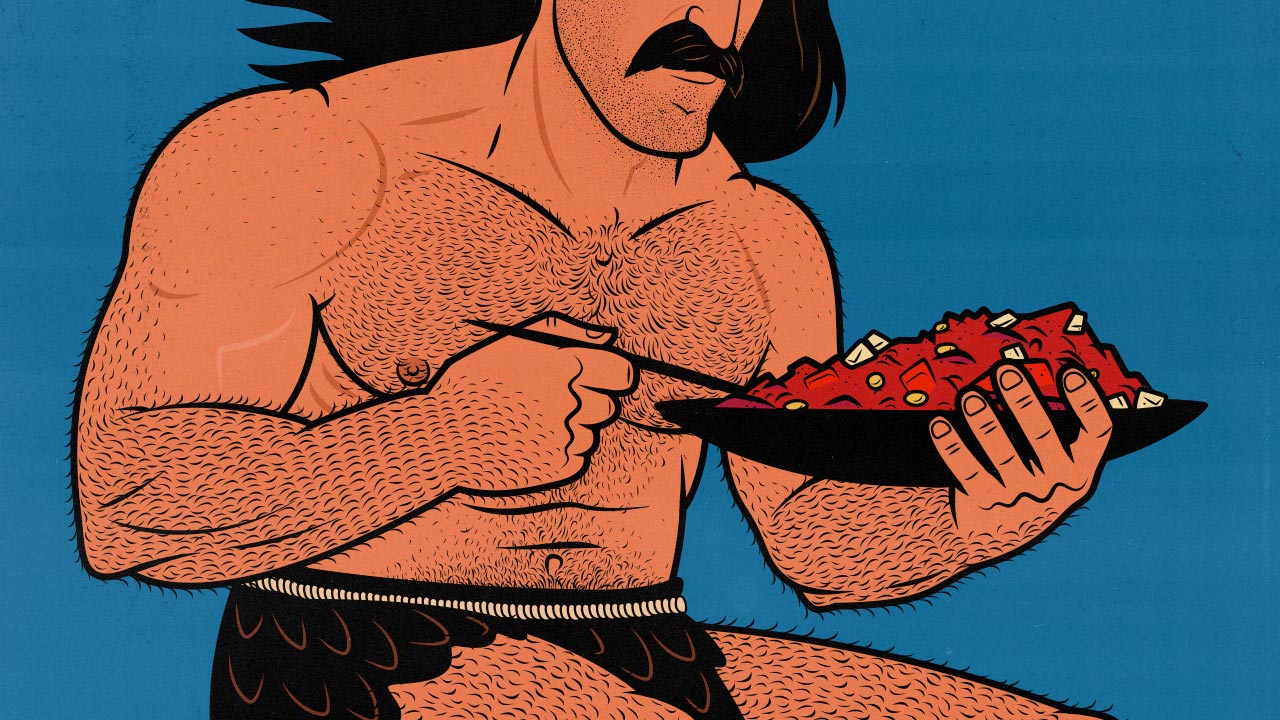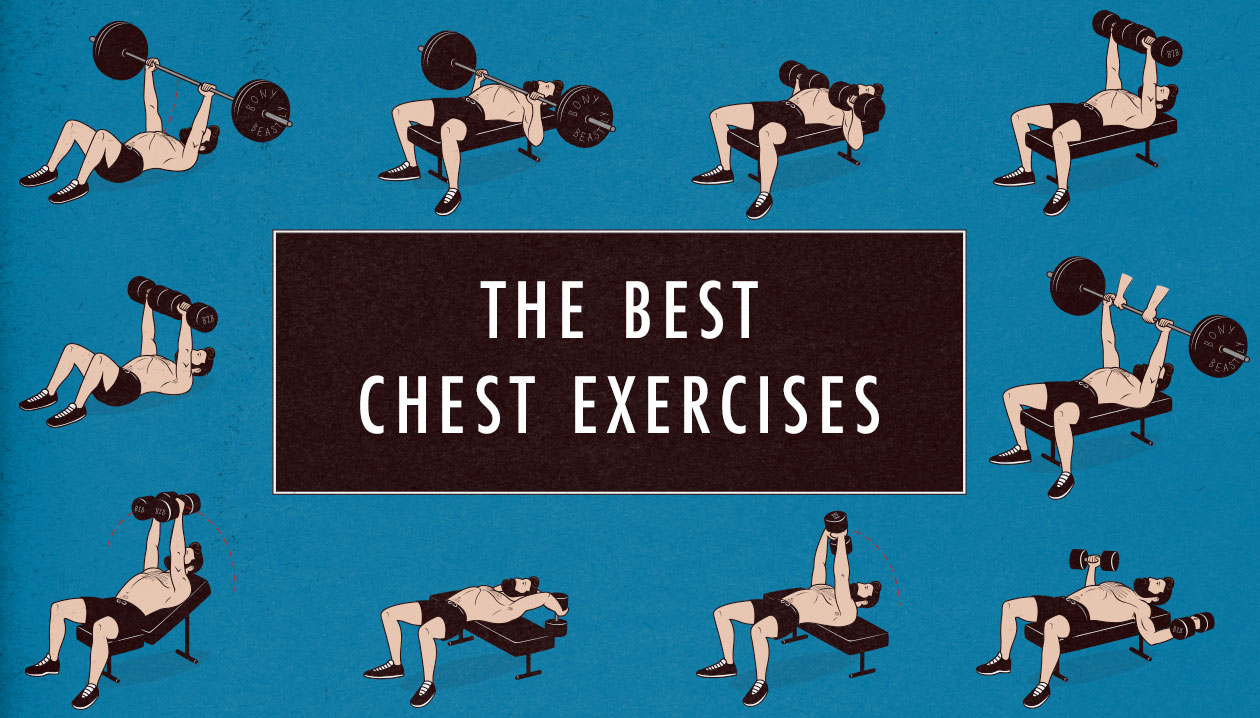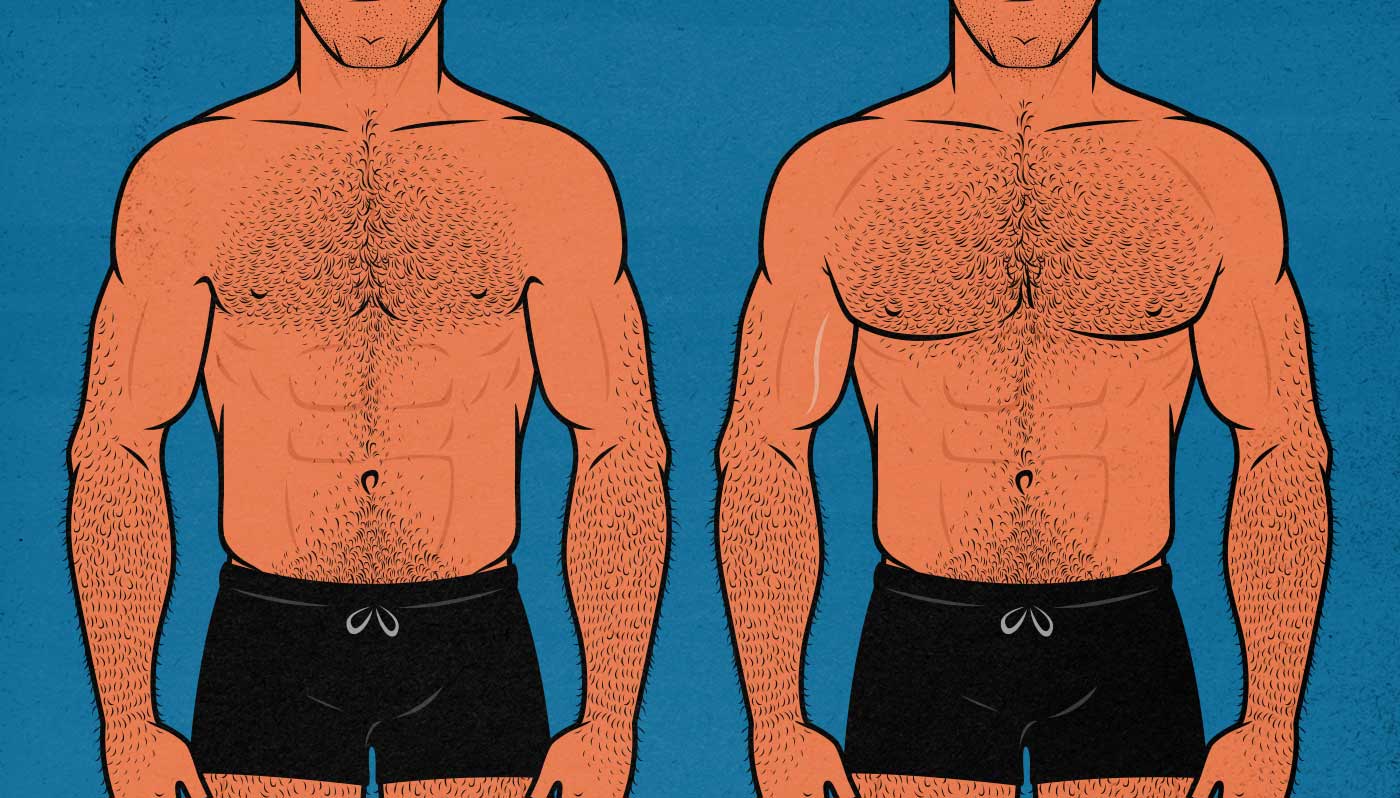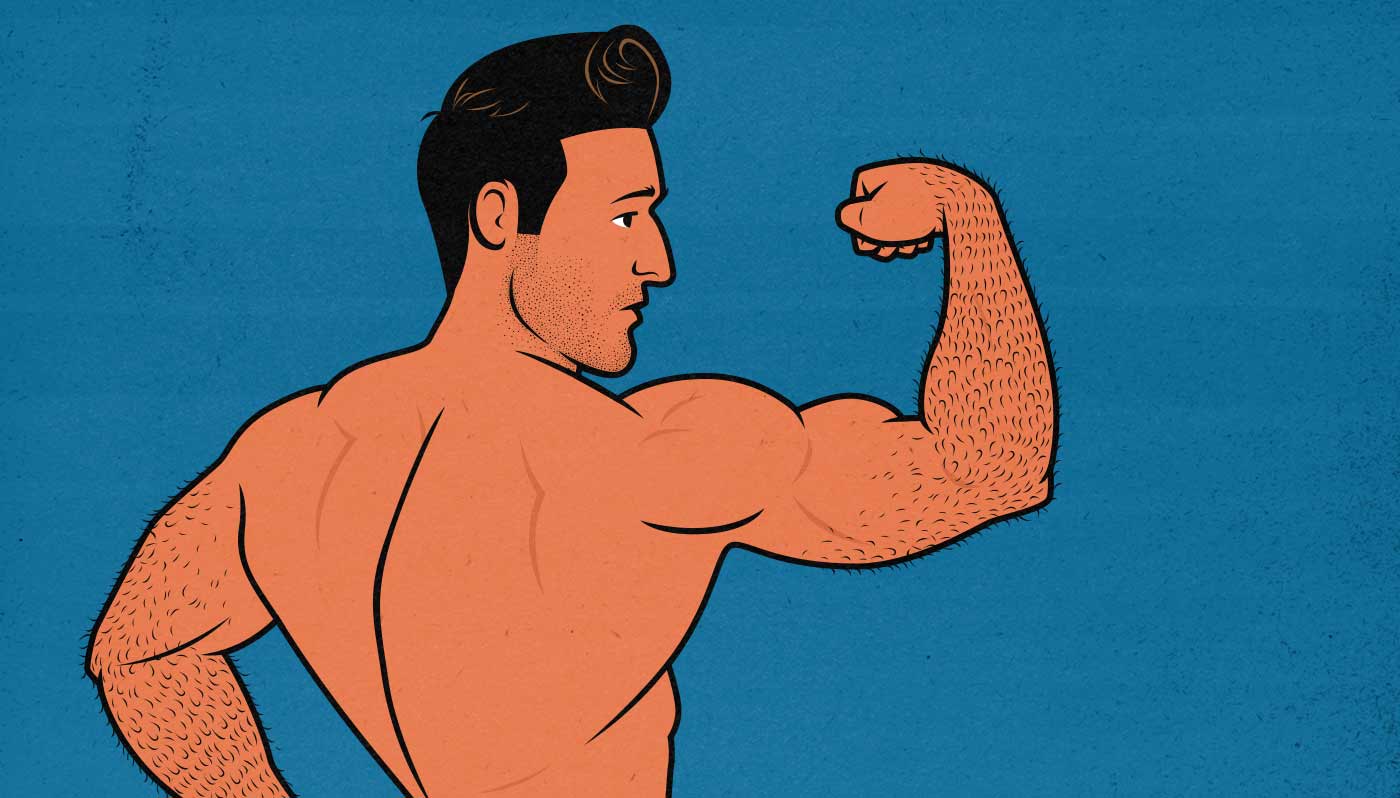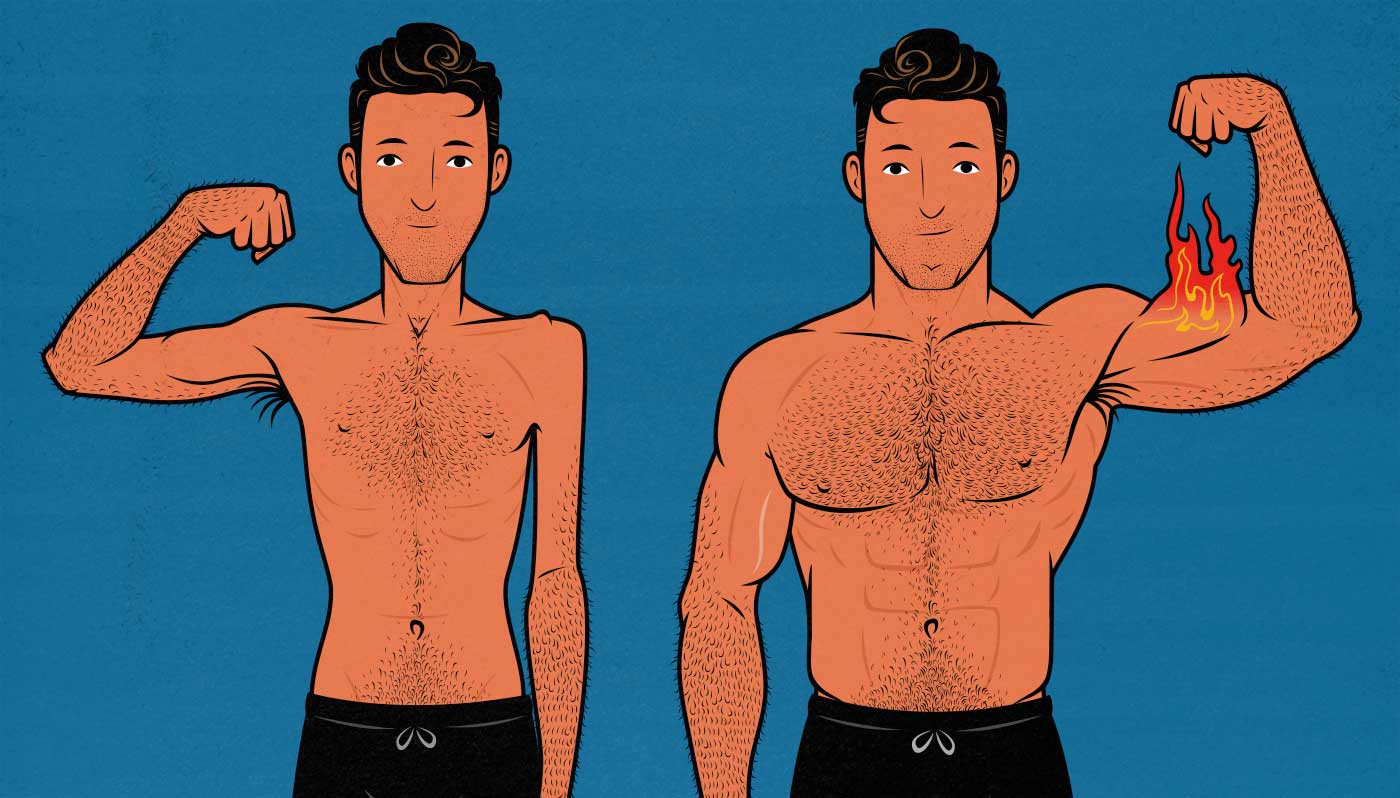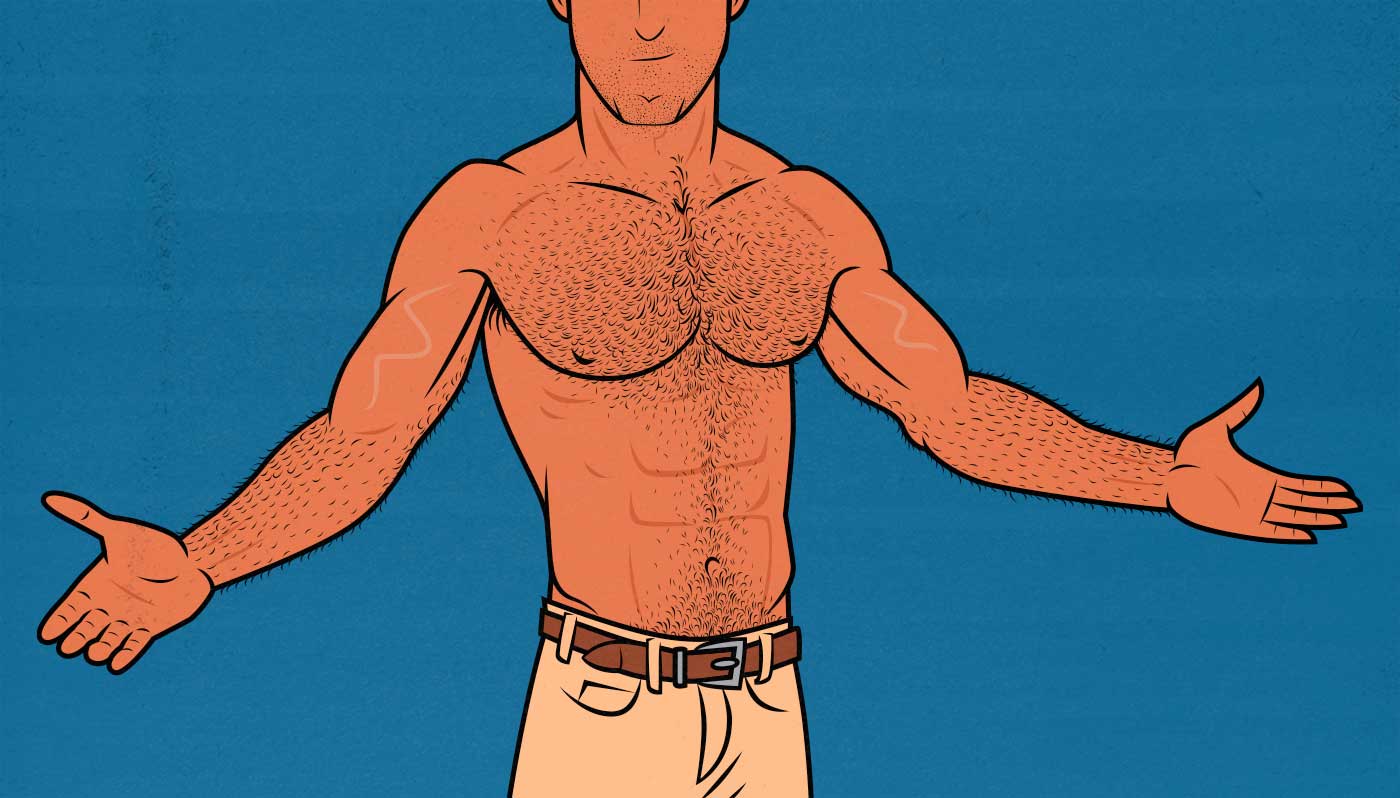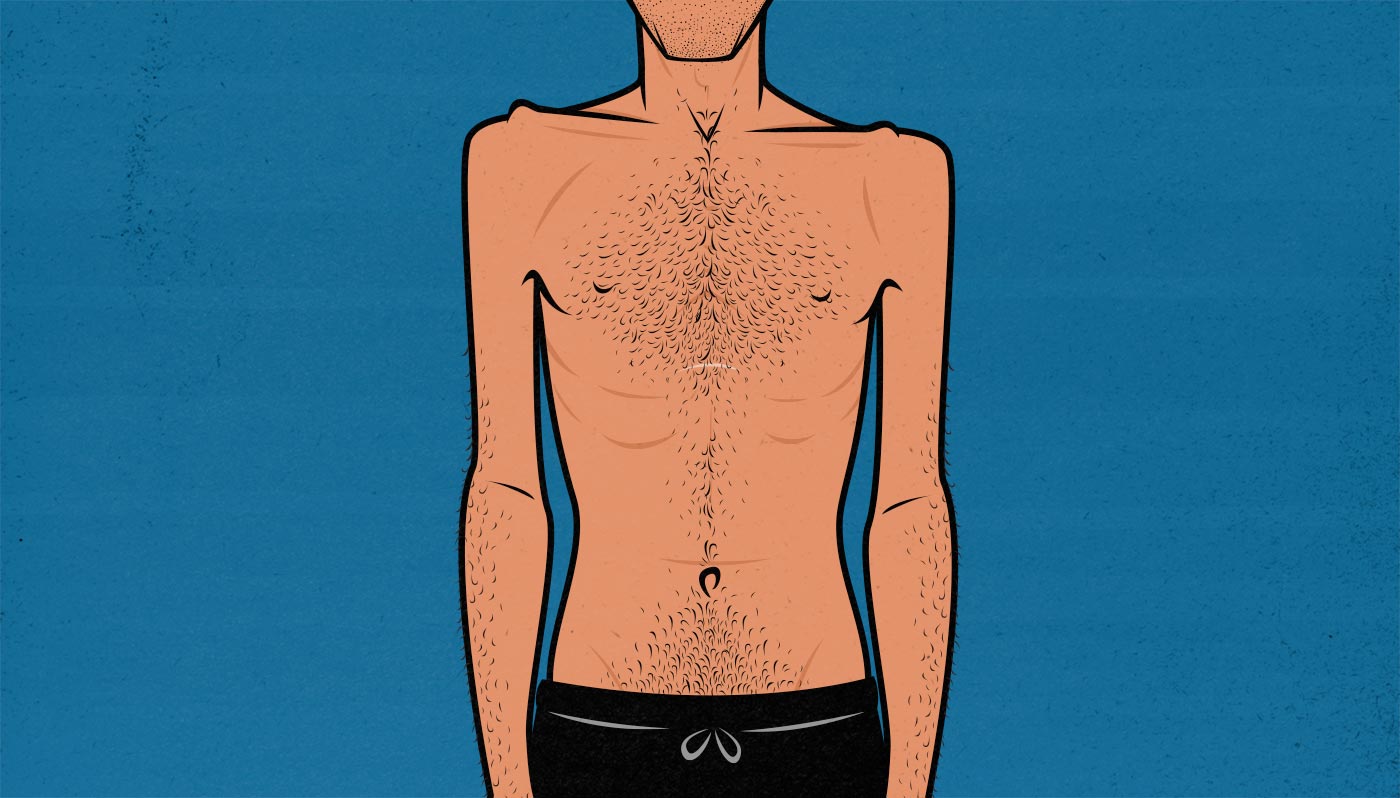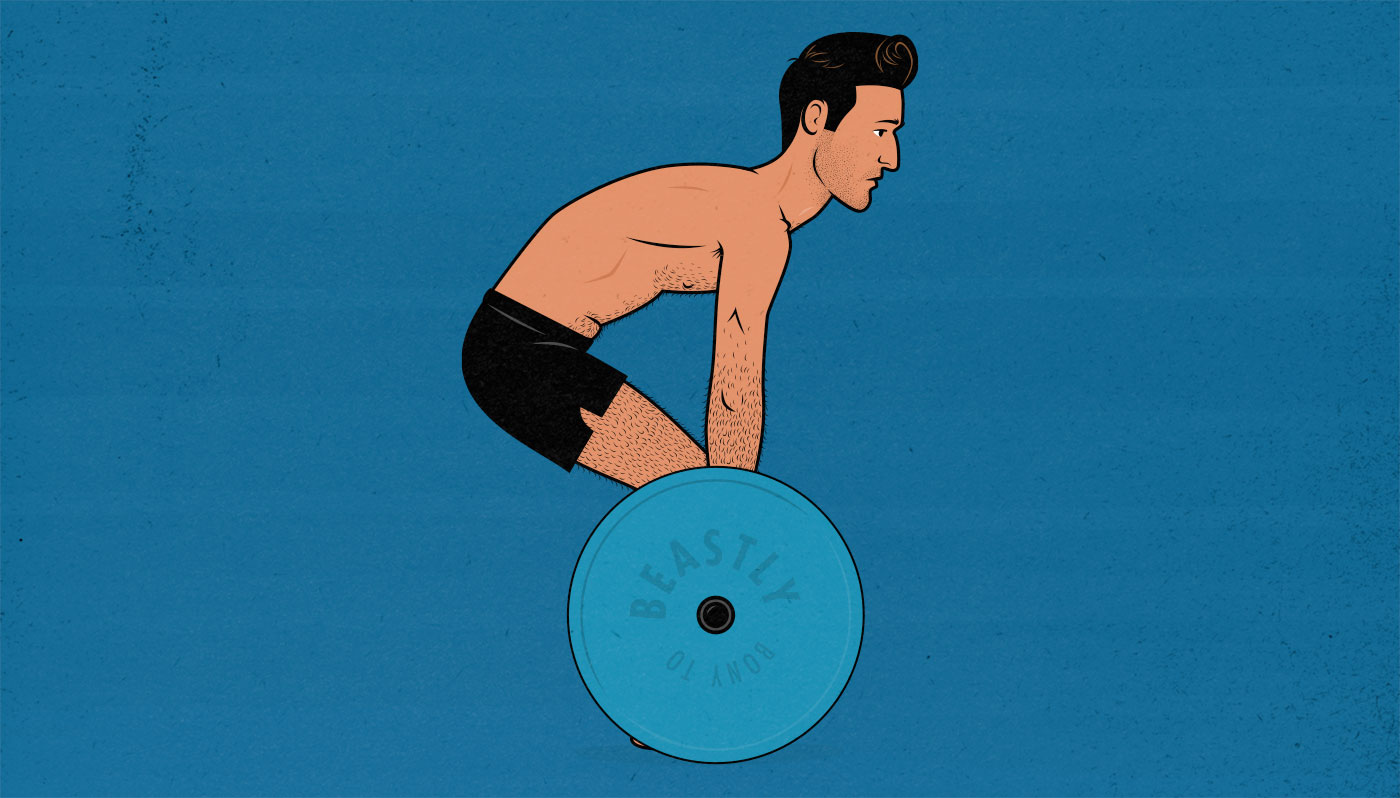Articles
The Best Workout Splits for Gaining Muscle—Explained
A workout split refers to how you organize your exercises throughout the week. Should you do 2, 3, or 9 workouts? Should you stack all your chest exercises into one of those workouts, split them between two, or do a few sets every workout?
There are a few different workout splits, each of them good, but each with its own pros and cons:
- Body Part “Bro Split:” This split focuses on one body part per workout. Monday is Chest Day, Tuesday is Back Day, and so on. This type of split is incredibly popular with bodybuilders—and for good reason.
- Upper/Lower Split: This split severs your workouts into upper-body days and lower-body days. This split shifts more emphasis toward your lower body, making it great for gaining strength and athleticism. When Marco was helping professional and Olympic athletes bulk up, he had almost all of them on upper/lower splits.
- Push/Pull/Legs Split: This split organizes workouts by movement pattern. Pushing exercises work the triceps, chest, and shoulders. Pulling exercises target the back and biceps. Leg exercises focus on the entire lower body. It’s more logical than a Bro Split but also less clever and efficient.
- Full Body Split: You train your entire body every workout. It’s the most efficient way to train, allowing you to build a tremendous amount of muscle with just two or three workouts per week. I gained my first 50 pounds this way.
- Hybrid Splits: This split combines different ideas together. For example, maybe you add an upper/lower split to a push/pull/legs split, giving you a 5-day workout routine for gaining strength, athleticism, and muscle size. Or if your arms are lagging behind, you could add an Arm Day to your full-body routine.
Without further ado, let’s break all these splits down so you can find the one that’s best for you.
Read MoreWhich Adjustable Dumbbells Should You Get? How Heavy?
This article covers how to build a dumbbell home gym, which is ideal for people living in smaller apartments or on a tight budget. With a pair of adjustable dumbbells, you can build just as much muscle as you can with a full barbell home gym. Your workouts may not be quite as efficient, but there are actually some interesting advantages to dumbbell training, too—especially for your arms, chest, and shoulders.
There are several different types of adjustable dumbbells, and some are much better than others. When I built my first dumbbell home gym, I made the mistake of buying the wrong type. They were rickety, it was difficult to adjust the weight, and I couldn’t rest them on my legs, making it hard to do the dumbbell bench press. They were such a pain to use that I wound up disliking dumbbell training. But we’ve learned a lot since then. Buying better dumbbells makes all the difference.
Finally, there are some great accessories you can add to your dumbbell home gym, including a workout bench, a chin-up bar, a couple of kettlebells, and maybe even some parallettes or gymnastic rings. These are totally optional, but we’ll go over the advantages they offer.
Read MoreThe Best Macros for Bulking: How Much Protein, Carbs & Fat to Eat
When figuring out our ideal bulking macros—how much protein, carbs, and fat we should eat—there are a few things we need to consider. First, we can look at the research to see which macros allow us to build muscle the fastest. Second, we can see which macros help us avoid gaining fat while bulking. Third, we can look at which macros make it easier to get into a sustainable calorie surplus.
But a lot of us care about more than merely building muscle. We also want to improve our general health as we do it. So we can also look at which macros have the best impact on our health as we bulk up.
So, what are the best macros for bulking?
Read MoreThe Best Chest Exercises for Building Muscle
The three best chest exercises are the bench press, push-up, and dip. They work your pecs along with your front delts and triceps. That’s usually a good thing, but you need to make sure those other muscles aren’t taking over and hogging all the muscle growth.
One solution is to include some chest isolation exercises: the dumbbell fly, cable crossover, and pec deck machine. I recommend the dumbbell fly—I’ll explain why in a second—but they’re all great exercises.
You also need an exercise for your upper chest, such as an incline bench press. Every pressing exercise works your upper chest, but usually not hard enough to stimulate much muscle growth. It pays to include a lift that targets it directly.
Here’s how to combine all the best chest exercises into a proper chest workout.
Read MoreHow to Build a Bigger Chest (Even If It’s Lagging Behind)
The chest is one of the biggest and most powerful muscles in our bodies, but it’s also notoriously difficult to grow, and many people find that it lags. In fact, if you’re a naturally skinny guy with narrow shoulders or a shallow ribcage, building a bigger chest may seem downright impossible. I’ve been there.
There are three principles that reliably improve chest growth:
- Choose exercises where your chest is the limiting factor, ensuring that it gets most of the growth stimulus. And if your upper chest is lagging, the same rule applies: choose lifts where your upper chest is the limiting factor.
- Challenge your chest under a deep stretch, improving how much muscle growth you stimulate with every set. As we’ll cover below, this can double your rate of muscle growth.
- Make sure that you’re achieving progressive overload, getting stronger over time, gradually lifting more weight or doing more repetitions. This includes eating enough protein and calories to recover and grow from your workouts.
If you can get stronger at lifts that are limited by the strength of your chest, then your chest will grow. And if those lifts challenge your chest under a deep stretch, it will grow much faster.
So, which lifts are best at challenging our chests through a deep range of motion? And how can we make sure that our chests are the limiting factor? Let’s dive in.
Dive InForearm Training: How to Build Bigger Forearms
When you first start lifting weights, it’s a good idea to focus most of your energy on the big compound lifts. Your workouts start with lifts like the squat, bench press, deadlift, chin-up, and row. These are the biggest lifts that build the most overall muscle mass. After that, we add in some isolation lifts. Curls for our biceps, extensions for our triceps, lateral raises for our shoulders, and maybe some exercises for our abs. These train the muscles that aren’t properly stimulated by the big compound lifts.
As you gain weight, build muscle, and get stronger at these lifts, you’ll probably notice that your grip is getting stronger, and your forearms are getting bigger. This is because the rows are training your elbow flexors, the biceps curls are training your wrist flexors, and the lateral raises are training your wrist extensors. They aren’t the main muscles being worked, but since we’re new to lifting weights, they grow.
The thing is, as you continue getting bigger and stronger, you’ll probably notice that your forearms stop growing. That’s because your forearm muscles have gotten both stronger and tougher, and these compound lifts aren’t challenging them enough to provoke any growth.
So how do we get bigger forearms? We train them directly. Here’s how.
Read MoreHow to Do a Lean Bulk
One of the most common bulking problems is gaining too much fat. For someone already muscular, gaining some fat makes them look beefy. Not a big deal. But for someone still fairly thin, it can make us look skinny fat. Better to do a lean bulk, right?
When you look up how to do a lean bulk, you’ll be told to gain weight very slowly—just a pound or so per month. You might hear about how you need to restrict certain foods or eat a cleaner diet. In some circumstances, that can help.
A better way to build muscle leanly is to stimulate more muscle growth. The more muscle growth you can stimulate, the more calories will be invested in lean mass, leaving fewer to spill over into fat storage. This is especially powerful for us skinny guys, given how quickly we can build muscle.
In this article, we’ll cover why people gain fat while bulking, how to gain muscle faster, how to minimize fat storage, and how to do a proper lean bulk.
Read MoreThe Skinny Guy’s Guide to Building a Hollywood Physique
In this article, I want to talk about realistic physique goals, both in terms of understanding the timeframe that it takes to build muscle, as well as how good you can expect to look by the end of it. Perhaps it’s our audience, being largely made up of skinny guys who actively seek out information, but we tend to see things differently than a lot of other fitness professionals.
Can you look like the sex icon from the latest Hollywood movie? Well, you can’t transform your face, and building muscle won’t automatically make you more charismatic, but can you have physique of Brad Pitt from Fight Club, Christian Bale in American Psycho, Will Smith in I Am Legend, Gerard Butler in 300, or Daniel Craig in James Bond? Yes, you probably can.
None of those actors have great muscle-building genetics. All of them are naturally skinny—so-called ectomorphs. Some of them are naturally lean, yes, but so are many of us. And believe it or not, most of them didn’t even routinely lift weights until a few months before shooting for those films. These aren’t just realistic physiques, these are physiques you can probably build with just a few months of dedicated weight training.
I realize this might sound crazy, but hear me out.
Read MoreHow to Know if You’re Skinny
How can you know if you’re skinny? There are a couple different ways. One definition for skinny is being underweight, so we can calculate your BMI. Another definition for skinny is having small muscles and lanky limbs, so we can look at your body-part measurements to see if you have smaller muscles than the average man.
That gives us two tests:
- Are you underweight?
- Are your muscles smaller than the average man’s?
In either case, we can then help you bulk up so that you’ve got a healthy bodyweight and muscles that look strong because they are strong.
Read MoreShould Beginners Lift to Muscle Failure?
As a new lifter trying to gain muscle size, how close to failure should you be lifting? Some argue that beginners should stop shy of failure, leaving a few reps in reserve (RIR). There’s some wisdom to that advice. It allows beginners to better practice their technique, reducing the risk of injury.
Others argue that beginners should take their sets all the way to muscular failure, ensuring they’re pushing themselves hard enough to stimulate a maximal amount of muscle growth with every set. But does taking a set all the way to failure actually stimulate more muscle growth? Let’s take a look at the research.
Finally, not every lift is the same. Some suit training to failure better than others. So, it’s not as simple as saying that a beginner should always train to failure or avoid training to failure. It often depends on the specific lift.
Read More
